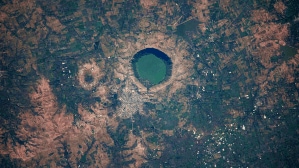The construction site called Saudi Arabia
The alarm bell sounded the end of the lunch break here one November afternoon, and suddenly thousands of workers— on foot...

The alarm bell sounded the end of the lunch break here one November afternoon, and suddenly thousands of workers— on foot, on bicycles and in buses — streamed in, seemingly from out of nowhere, and jolted this huge construction site to life.
Amid a forest of cranes, towers and beams rising from the desert, more than 38,000 workers from China, India, Turkey and beyond have been toiling for two years in unforgiving conditions – often in temperatures exceeding 100 degrees – to complete one of the world’s largest petrochemical plants in record time. By the end of the year, this massive city of steel at the edge of the Red Sea will take its place as a cog of globalisation: plastics produced here will be used to make televisions in Japan, cellphones in China and thousands of other products to be sold in the US and Europe. Construction costs at the plant, which spreads over eight square miles, have doubled to $10 billion because of shortages in materials and labor. The amount of steel being used is 10 times the weight of the Eiffel Tower.
“I’ve worked on many big things in my life, but I’ve never worked on anything this big,” an American project manager mused during a bus tour of the project, called Petro Rabigh, a joint venture of the state-run oil company Saudi Aramco and Sumitomo Chemical of Japan.
Size isn’t the only consideration. The project is Saudi Arabia’s boldest bet yet that this oil-rich kingdom can transform itself into an industrial powerhouse. The plant is part of a $500-billion investment program to build new cities, create millions of jobs and diversify the economy away from petroleum exports over the next two decades.
“The Saudi economy was in idle mode for 20 years,” said John Sfakianakis, the chief economist at SABB, who is based in Riyadh. “Today, the feeling here is, ‘We’ve won the lottery; let’s not waste it.’ “
The kingdom’s lofty economic goals would have been unthinkable without the surge in energy prices that has filled the coffers of oil producers. Oil prices have quadrupled since 2002 and reached $100 a barrel in New York this month. Persian Gulf countries earned $1.5 trillion in oil revenue from 2002 to 2006, twice as much as in the previous five-year period, according to the Institute of International Finance, a global association of banks that is based in Washington. As the top exporter, Saudi Arabia has been the main beneficiary. Despite all the recent headlines about Middle East investors bailing out troubled American banks like Citigroup, a growing share of today’s petrodollars are staying at home to finance megaprojects like Petro Rabigh, analysts say. That money is financing the biggest economic boom in a generation, helping to build not only the high-rises of Dubai, where the world’s tallest tower is going up, but also telecommunications networks, roads and universities throughout the Middle East.



- 01
- 02
- 03
- 04
- 05




























